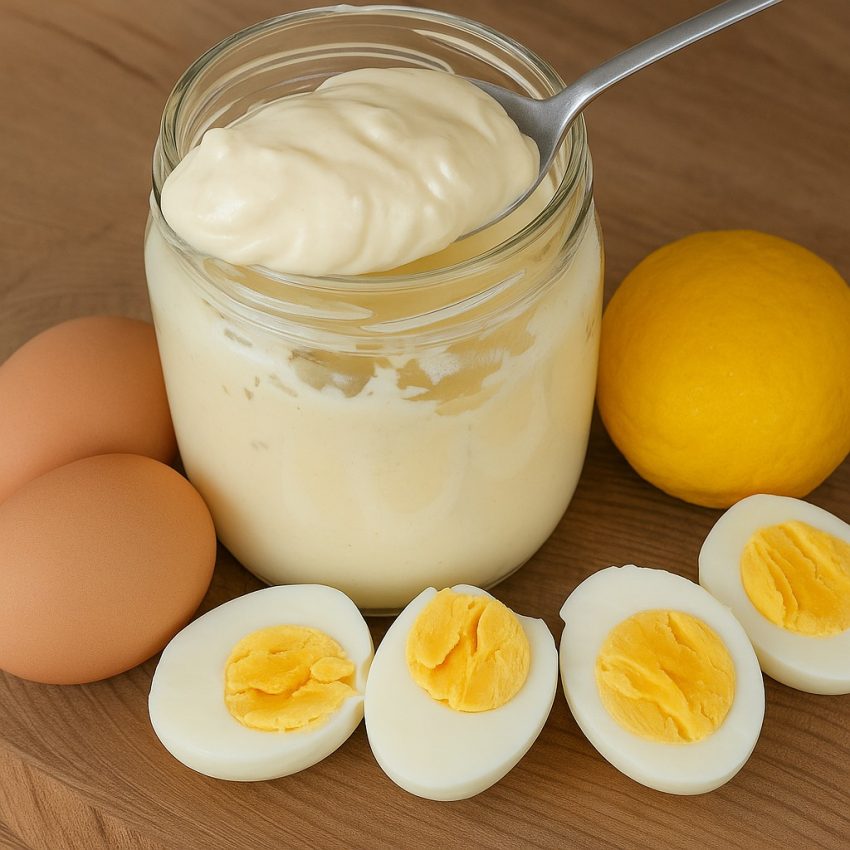ADVERTISEMENT
### The Benefits of Using Boiled Eggs in Mayonnaise
#### Health and Safety Considerations
One of the primary reasons to switch to mayonnaise made with boiled eggs is the improved safety profile. Raw eggs can carry salmonella, a bacteria that poses significant health risks, especially to young children, the elderly, and those with compromised immune systems. By using boiled eggs, you eliminate this risk entirely, making it a safer choice for everyone.
#### Lighter Texture and Flavor
Mayonnaise made with boiled eggs is renowned for its lighter texture. The consistency is less dense and heavy compared to traditional mayonnaise, making it more palatable, especially in large quantities. This lighter texture is perfect for those who prefer a subtlety that doesn’t overpower other flavors in a dish. Moreover, the taste of mayonnaise made with boiled eggs can be described as milder and less eggy, which can be a boon for those who are sensitive to the rich taste of raw eggs.
#### Nutritional Advantages
Switching to boiled eggs also has nutritional benefits. Boiling eggs helps to reduce the cholesterol content compared to when they are raw. This can be an important consideration for individuals monitoring their cholesterol intake. Additionally, the process of boiling eggs retains essential nutrients like protein and vitamins, ensuring that your mayonnaise remains a healthful addition to your meals.
### How to Make Mayonnaise with Boiled Eggs
#### Ingredients You Will Need
To make mayonnaise with boiled eggs, you will need the following ingredients:
– 2 large boiled eggs
– 1 cup of oil (such as vegetable or olive oil)
– 1 tablespoon of vinegar or lemon juice
– 1 teaspoon of mustard (optional)
– Salt and pepper to taste
#### Step-by-Step Instructions
1. **Boil the Eggs:** Start by boiling the eggs until they are hard-boiled. This typically takes about 10-12 minutes. Once done, let them cool before peeling.
2. **Blend the Ingredients:** In a blender or food processor, combine the boiled eggs, vinegar or lemon juice, mustard, salt, and pepper. Blend until you have a smooth consistency.
3. **Incorporate the Oil:** While blending, slowly add the oil in a steady stream. This gradual addition is key to achieving the right emulsion, ensuring your mayonnaise is smooth and well-integrated.
4. **Adjust Seasonings:** Taste your mayonnaise and adjust the seasonings as needed. You may want to add more salt, pepper, or mustard depending on your preference.
5. **Store Properly:** Transfer your mayonnaise to a clean jar or container. Store it in the refrigerator and use within a week for optimal freshness.
### Applications and Versatility
Mayonnaise made with boiled eggs is just as versatile as its traditional counterpart. It can be used in sandwiches, salads, dips, and as a base for sauces. Due to its lighter texture, it is particularly well-suited for dishes that require a more delicate touch. For instance, when used as a dressing for salads, it can lightly coat the leaves without weighing them down.
### Conclusion
Incorporating boiled eggs into your mayonnaise recipe can provide numerous benefits, from safety and health advantages to a lighter, more nuanced flavor profile. This variation is an excellent alternative for those looking to enjoy mayonnaise without the potential risks associated with raw eggs. By following a few simple steps, you can create a homemade version that is not only delicious but also more accommodating to different dietary needs. So, why not give mayonnaise made with boiled eggs a try and experience the difference for yourself?
ADVERTISEMENT


